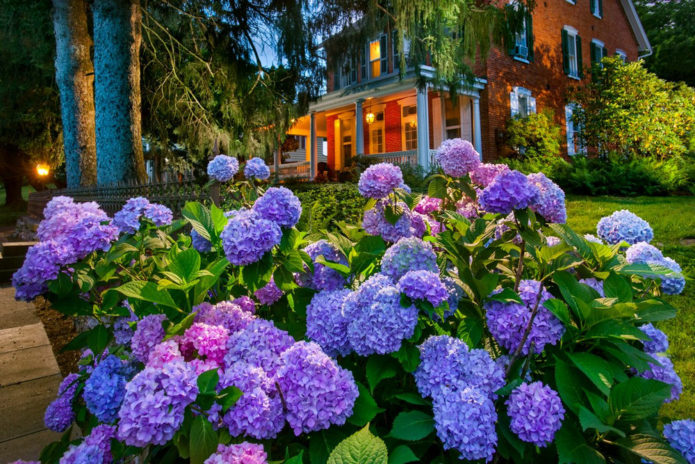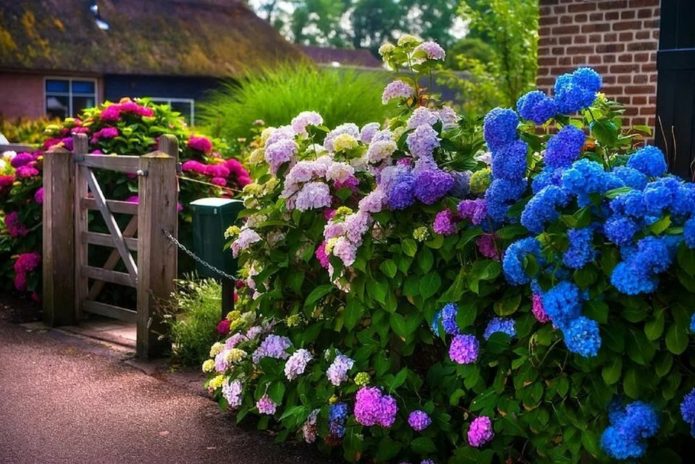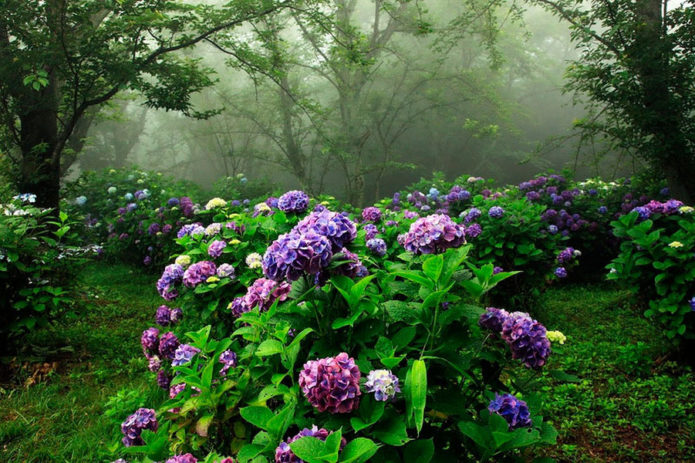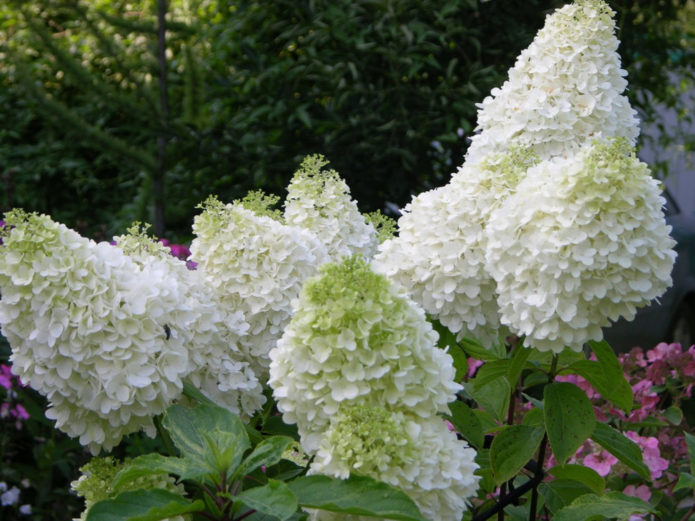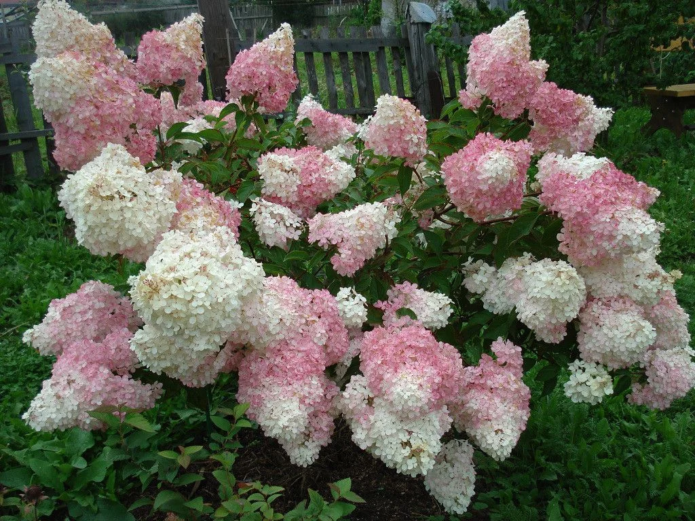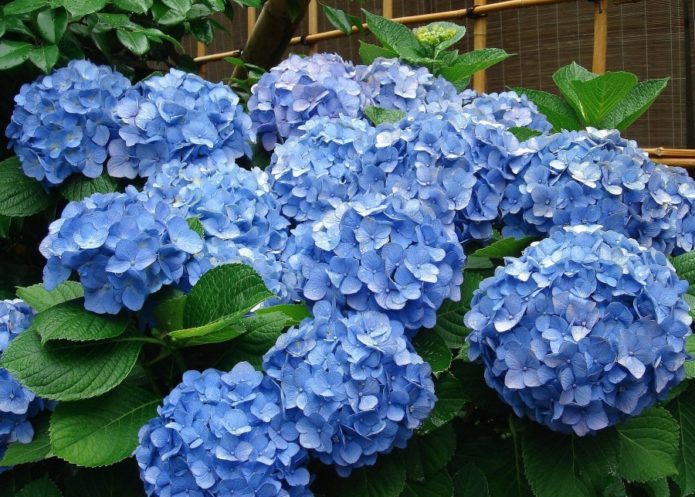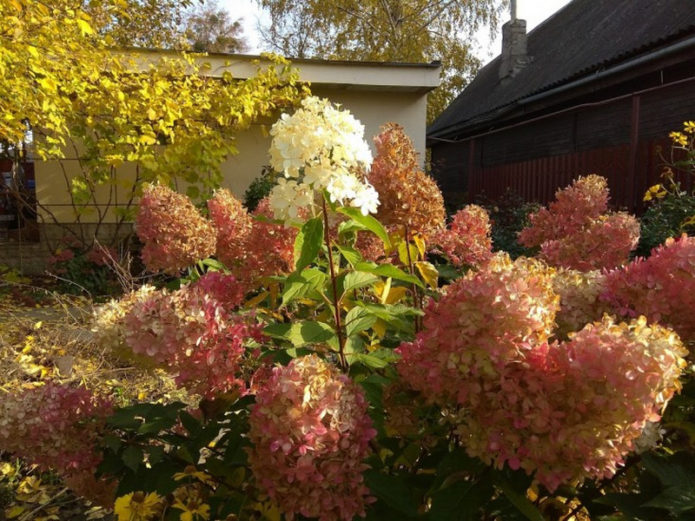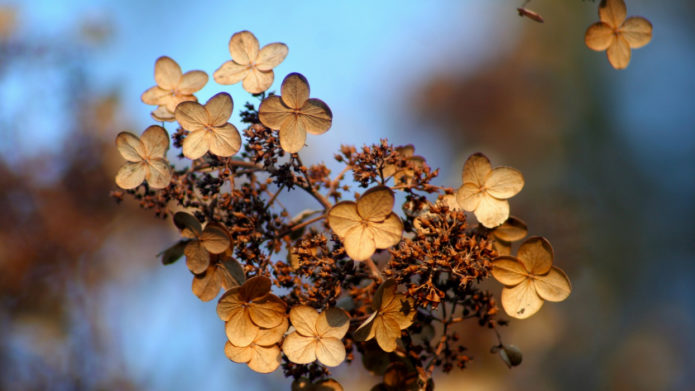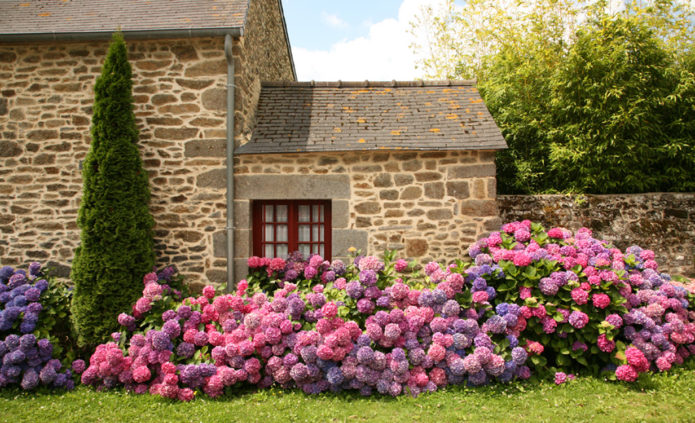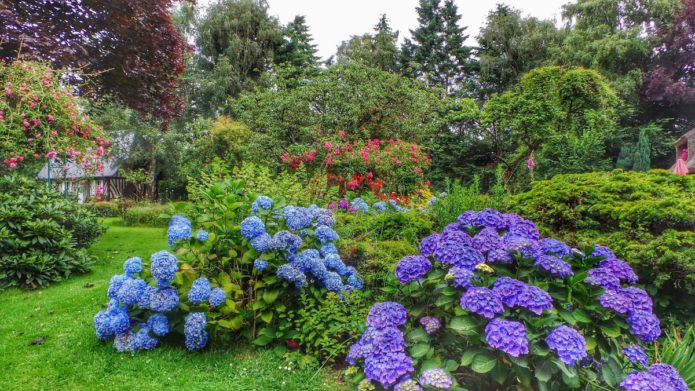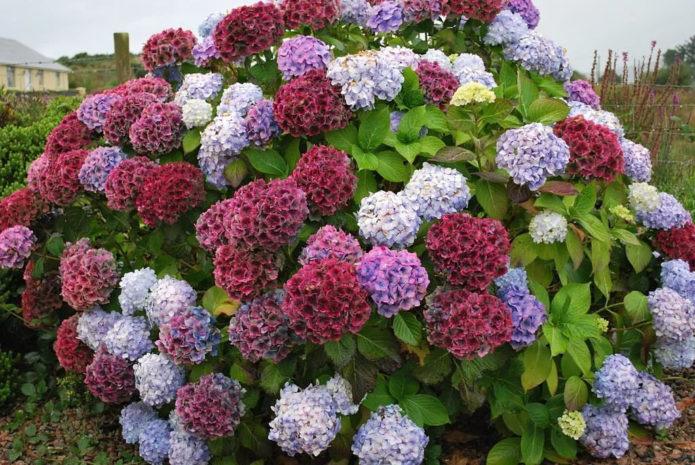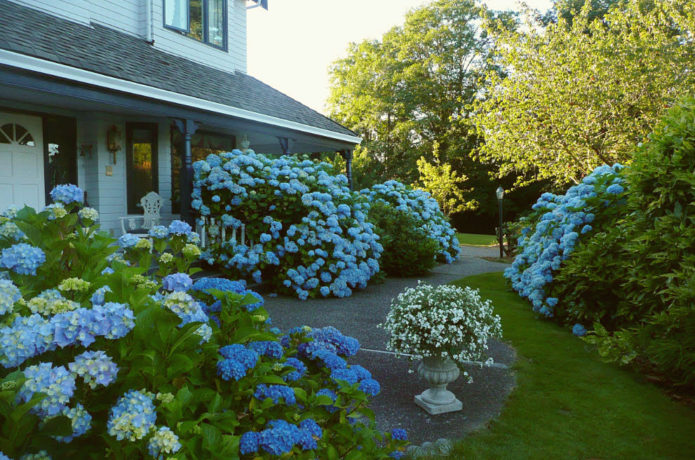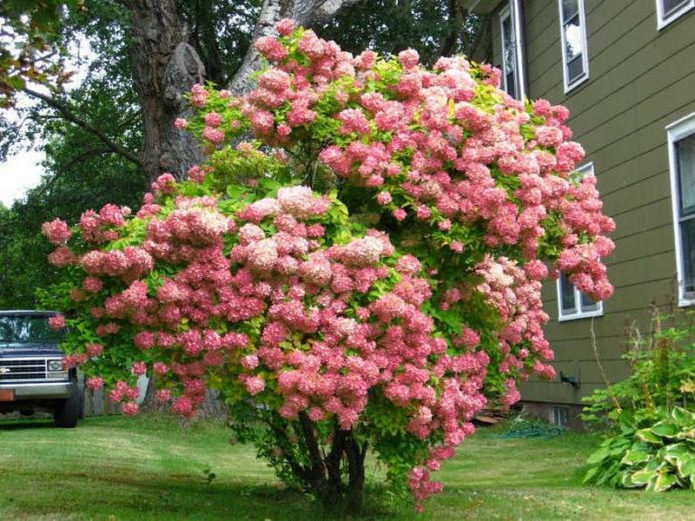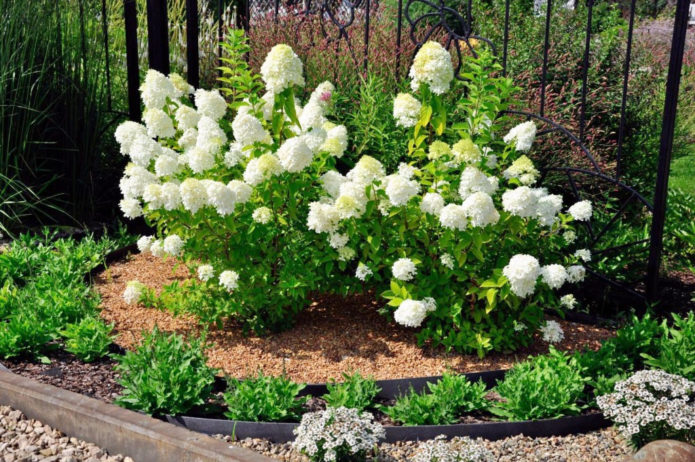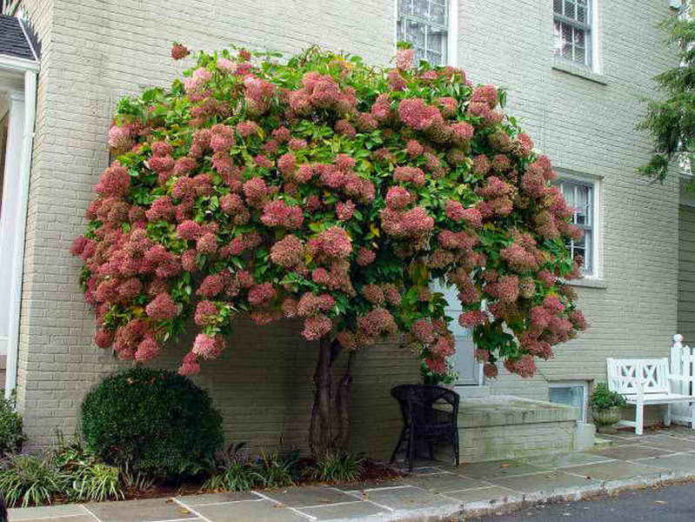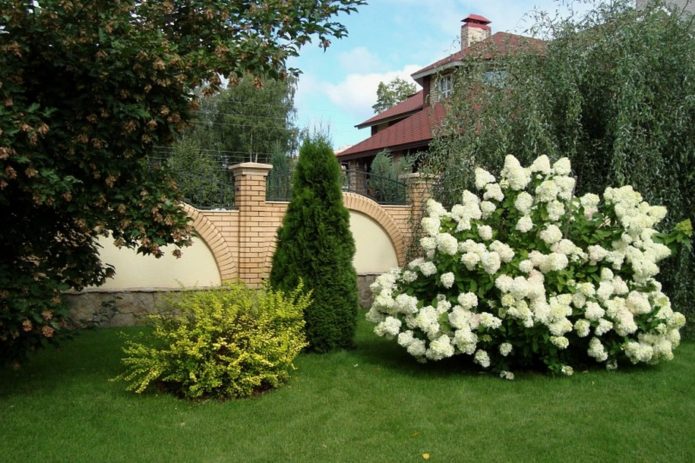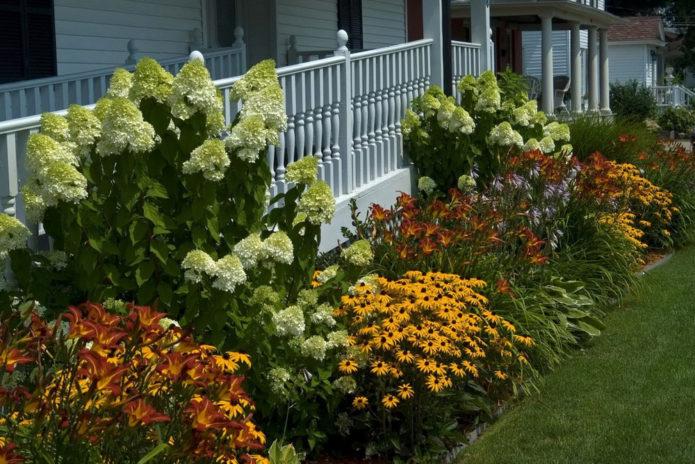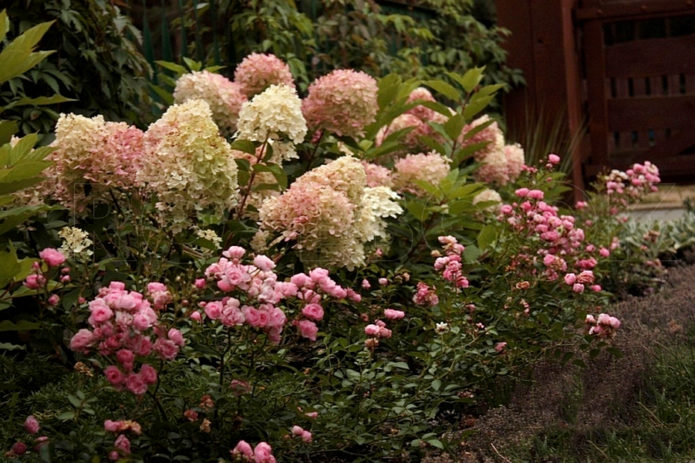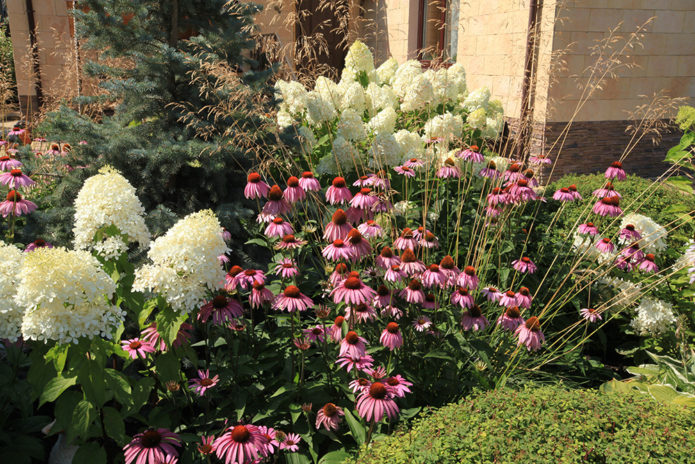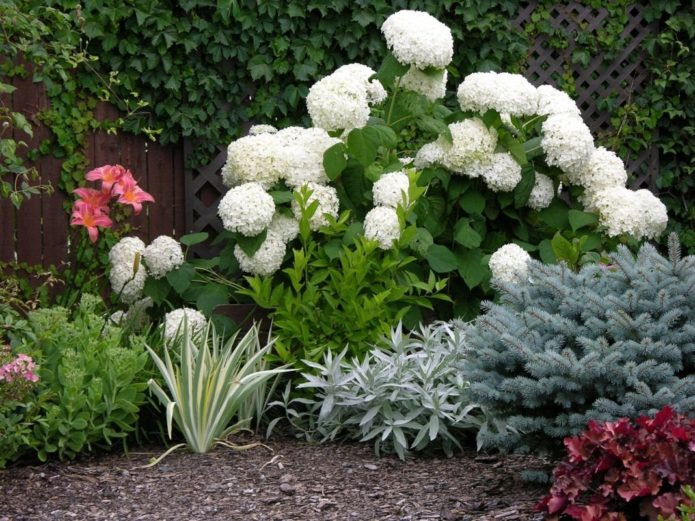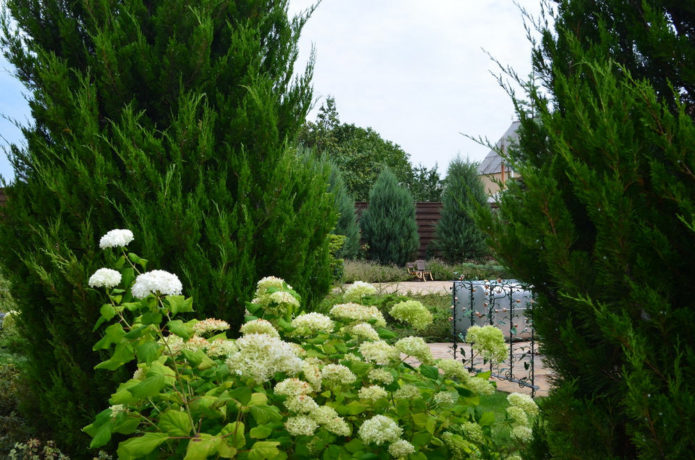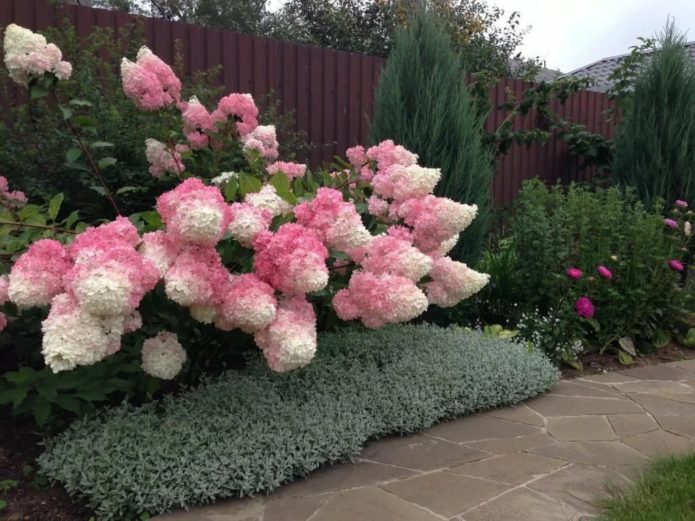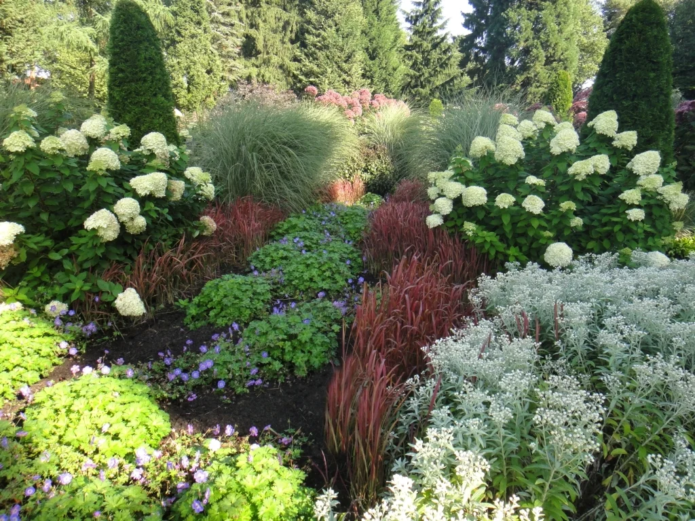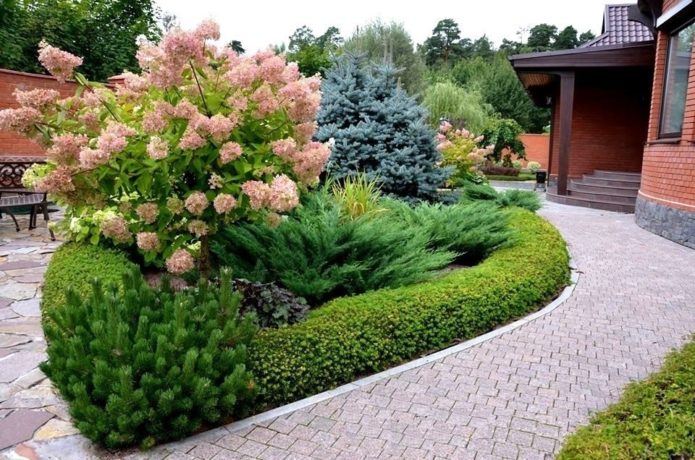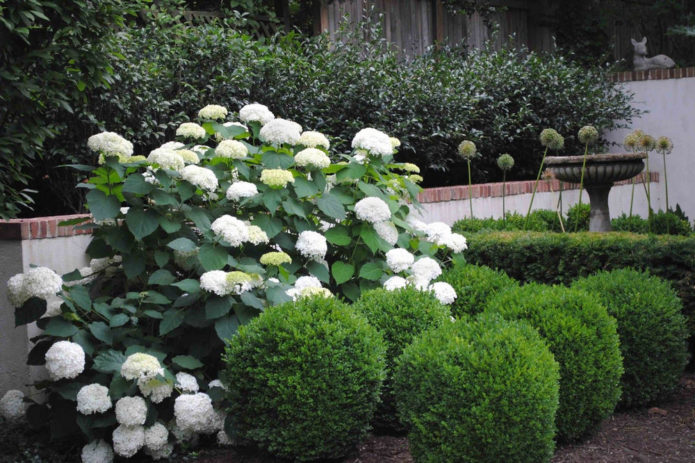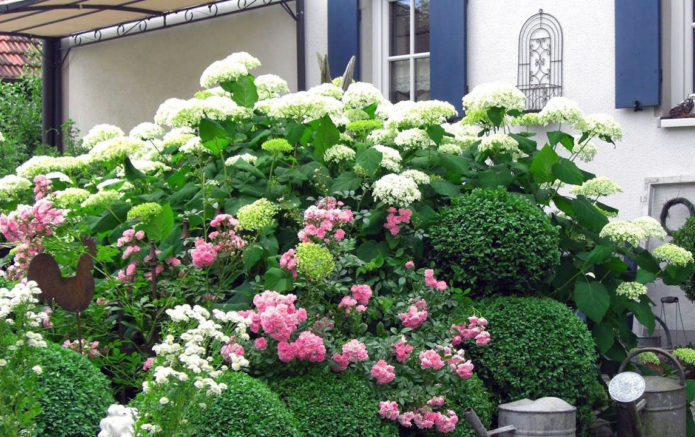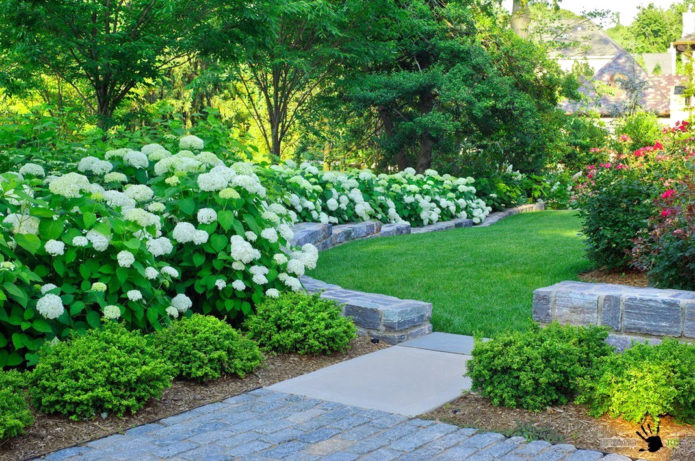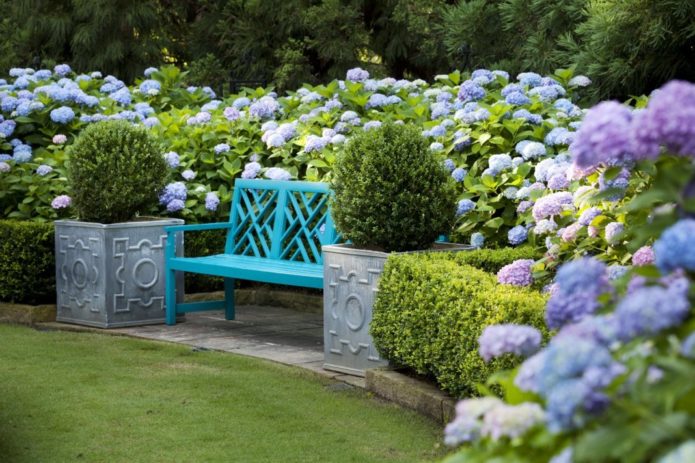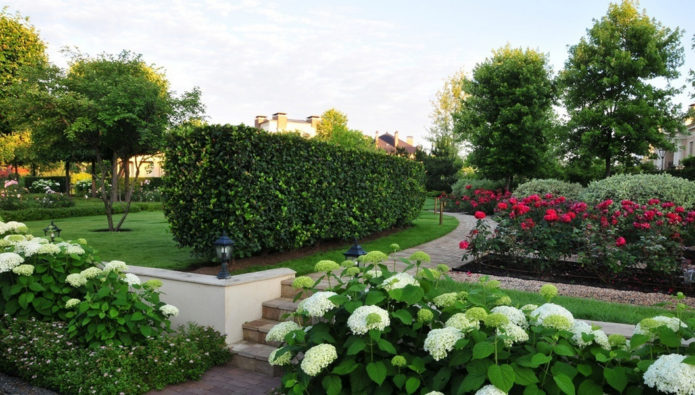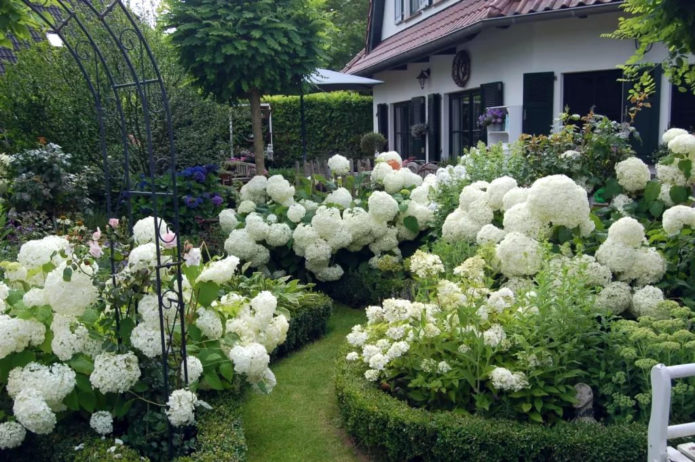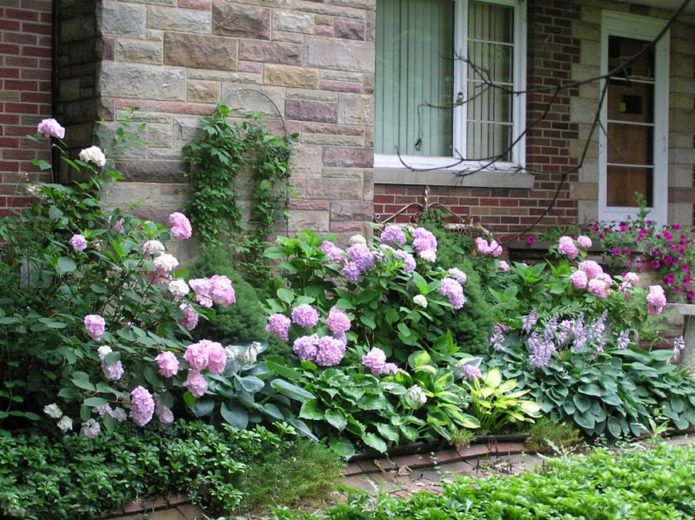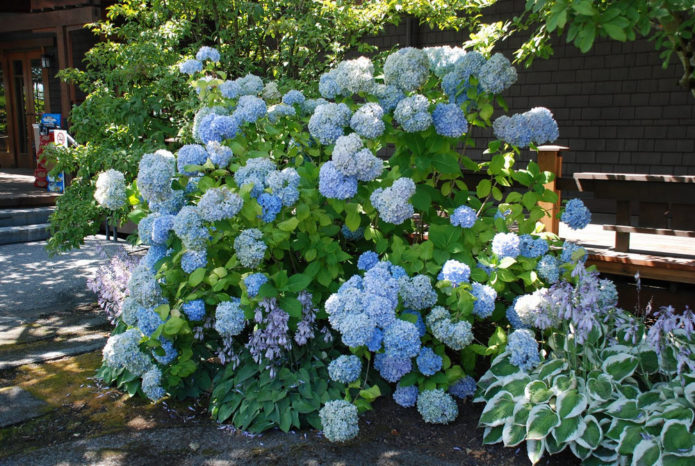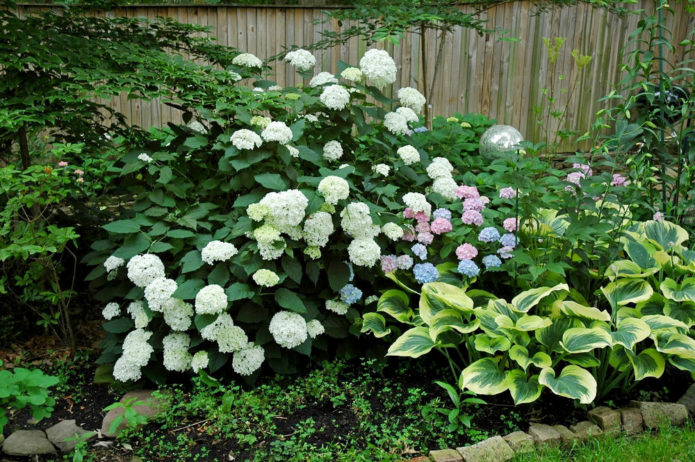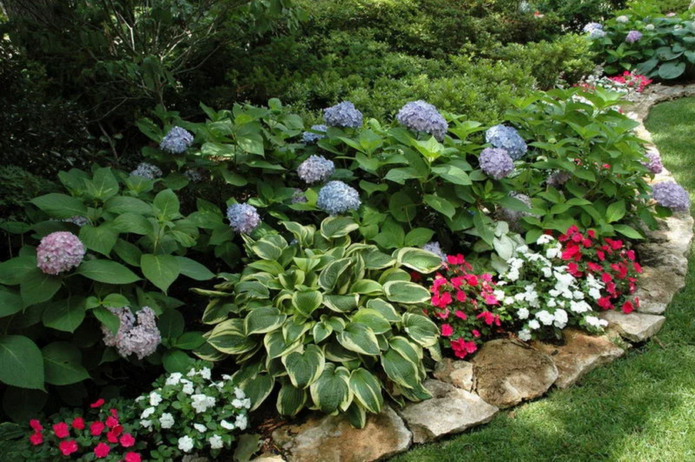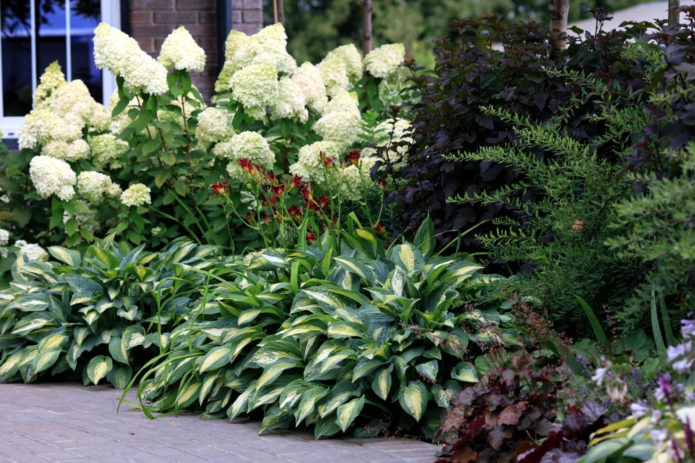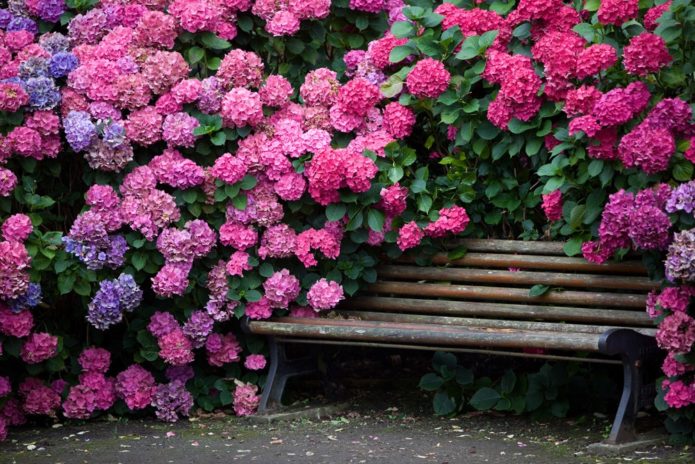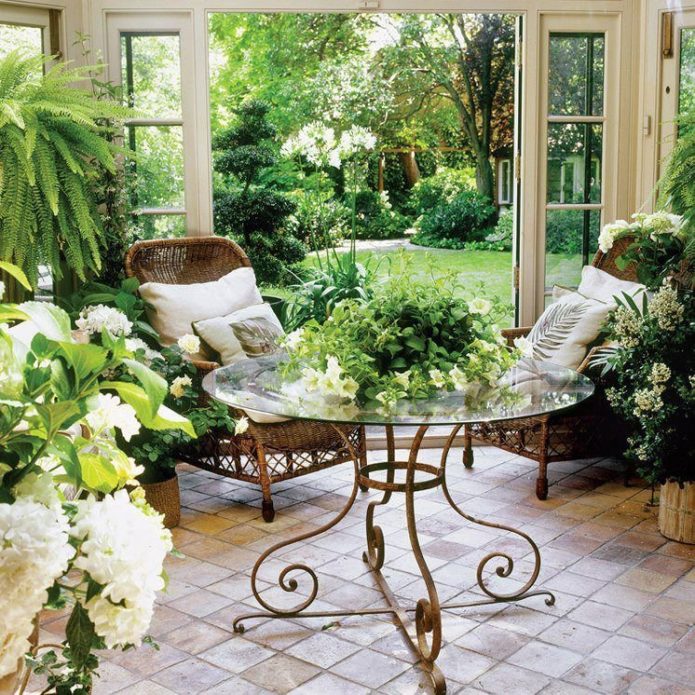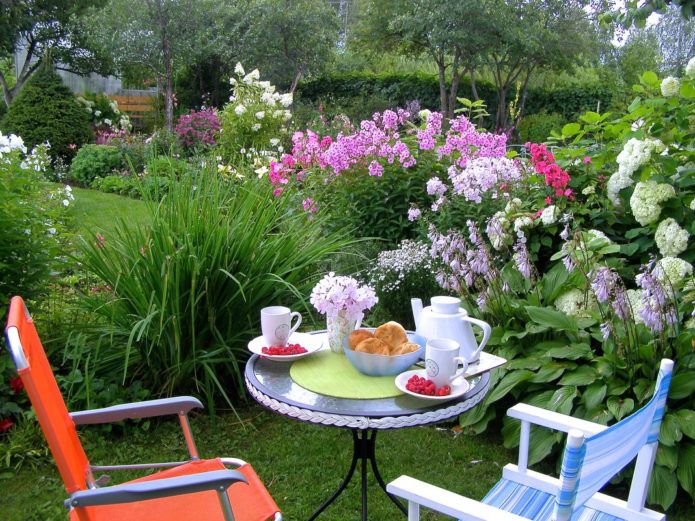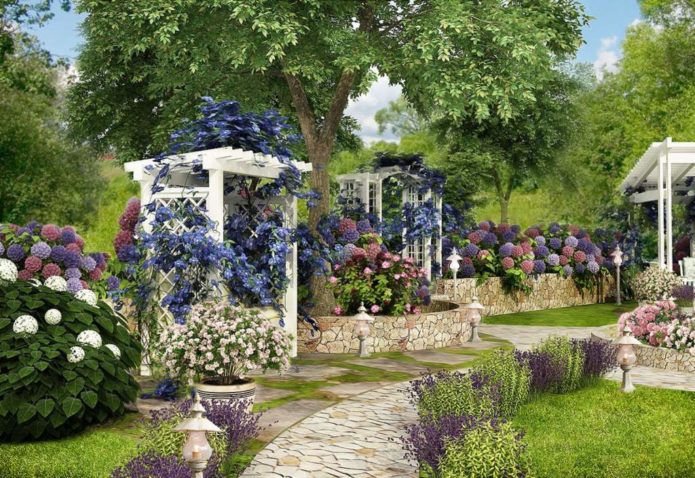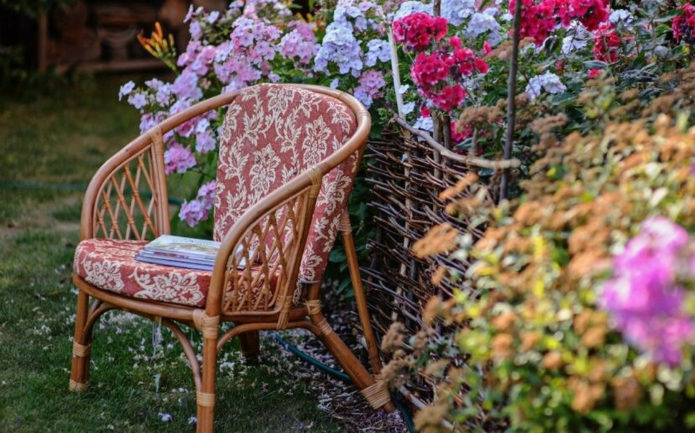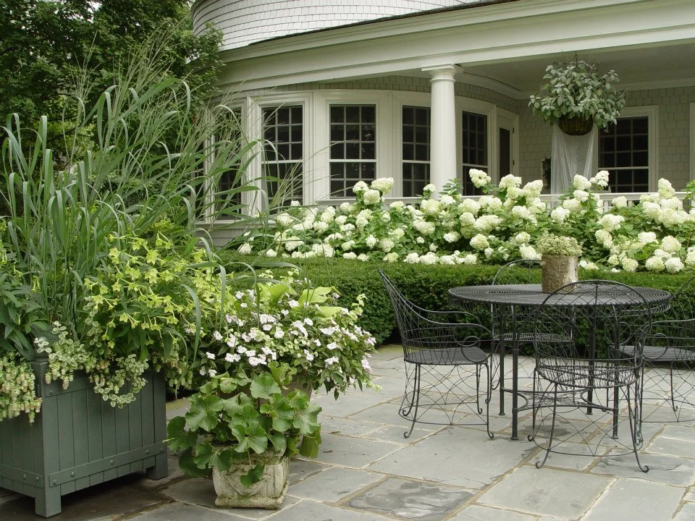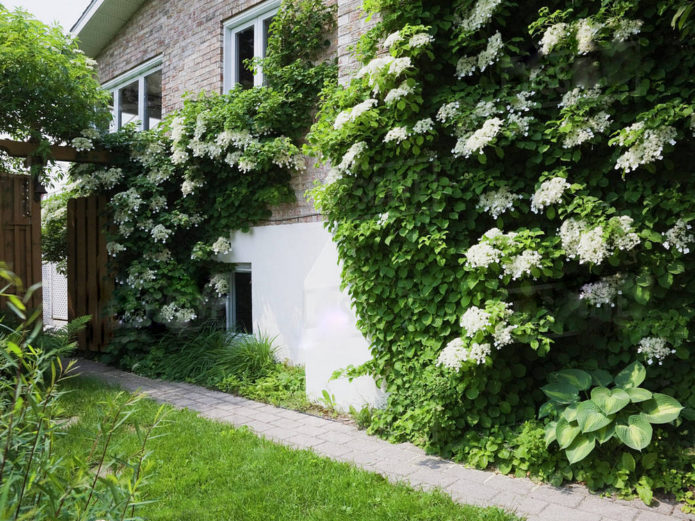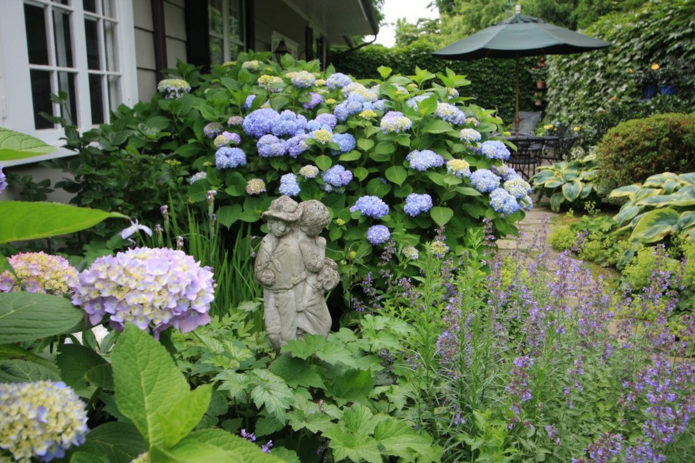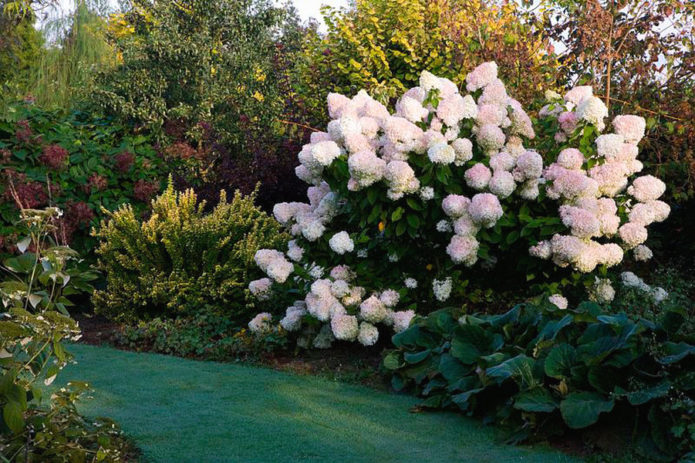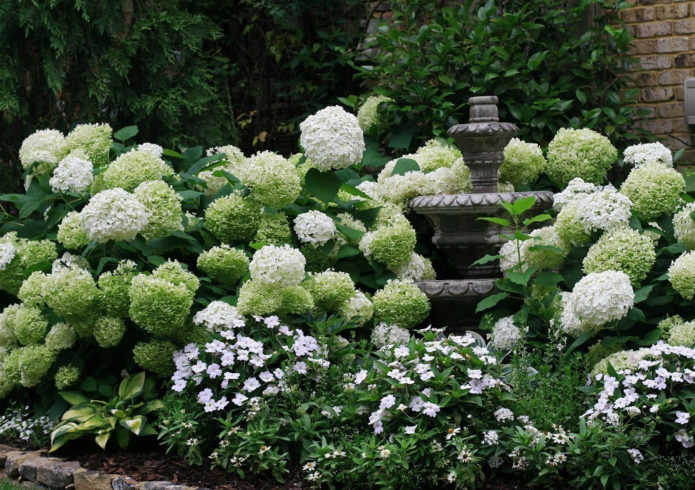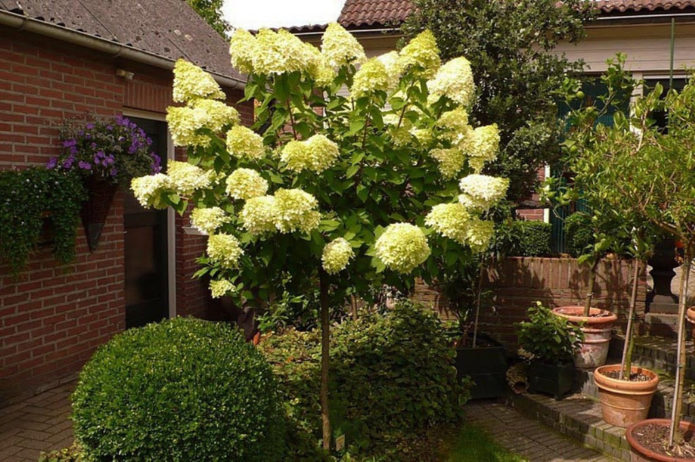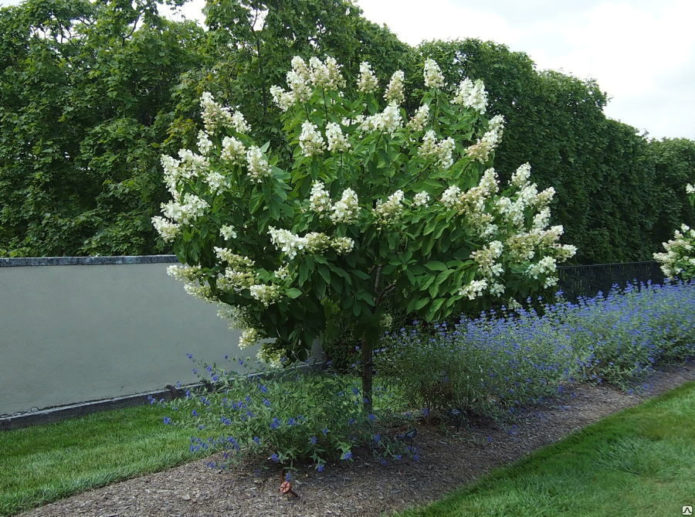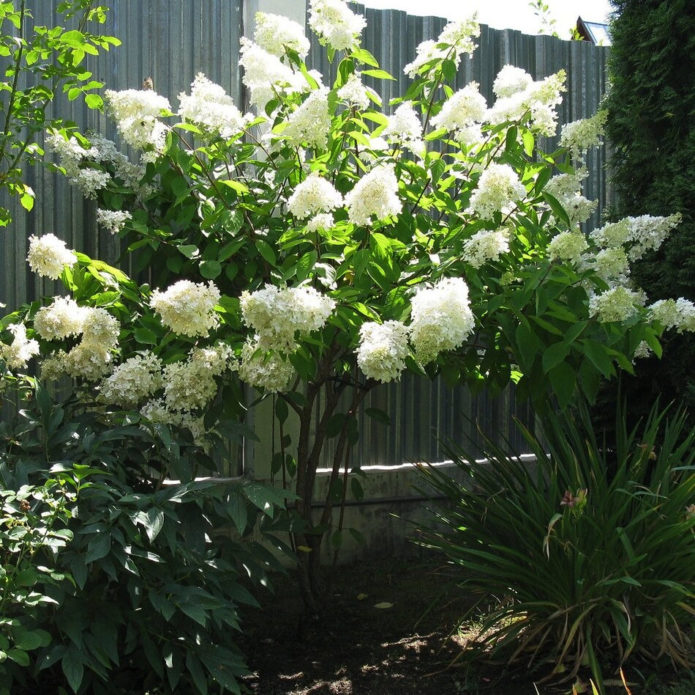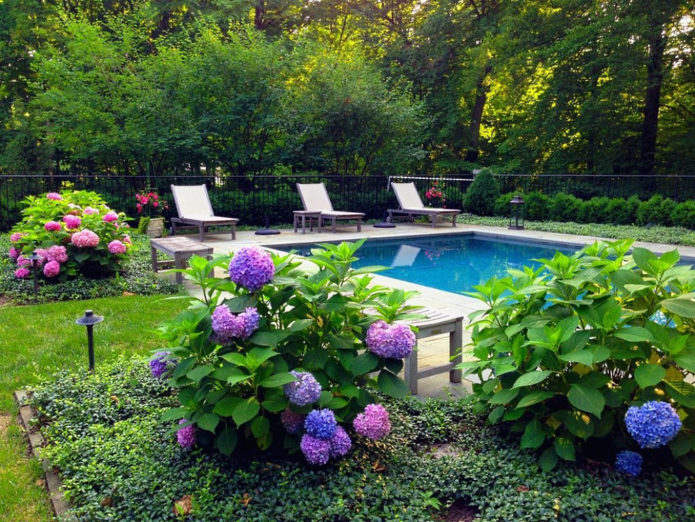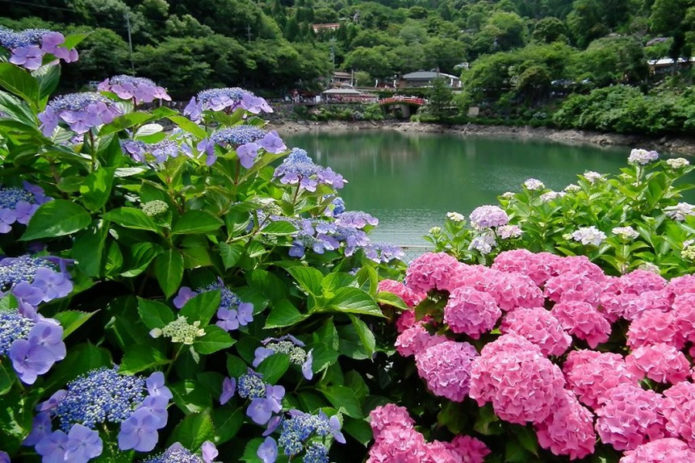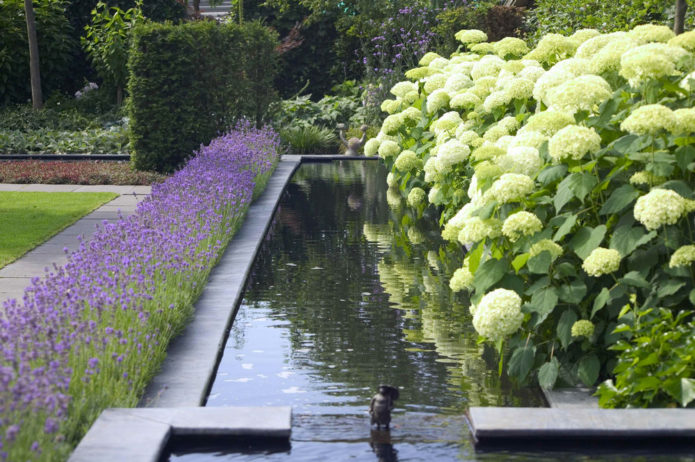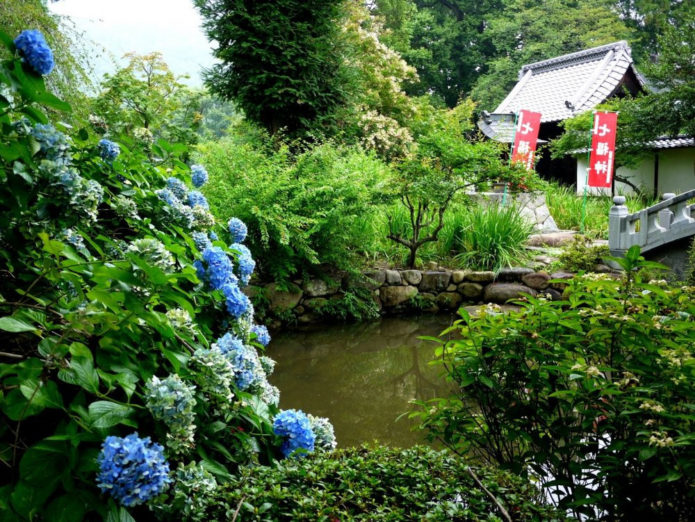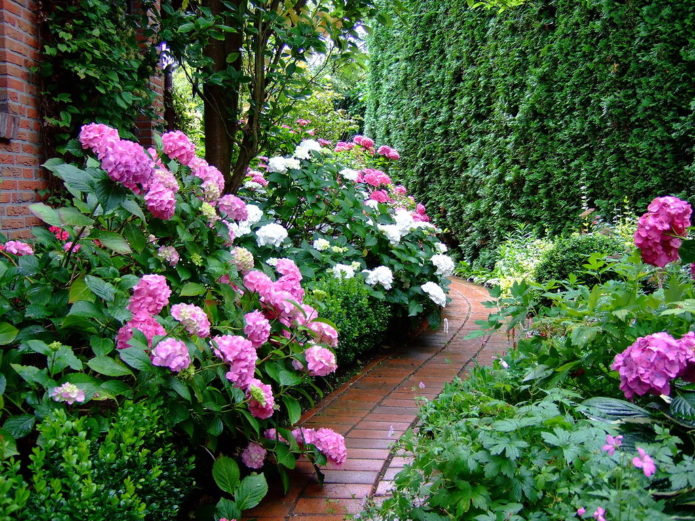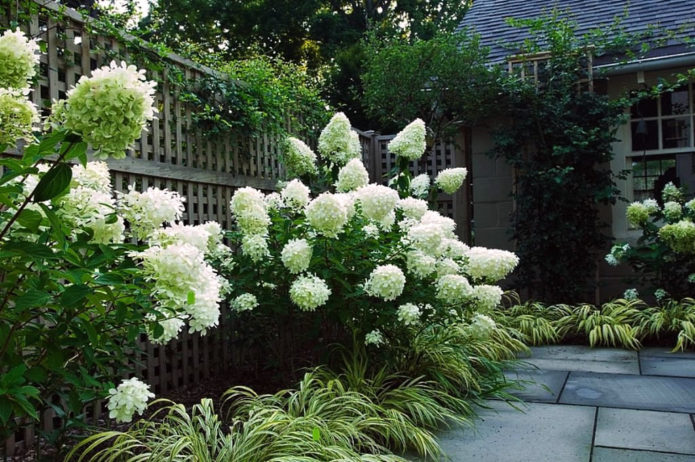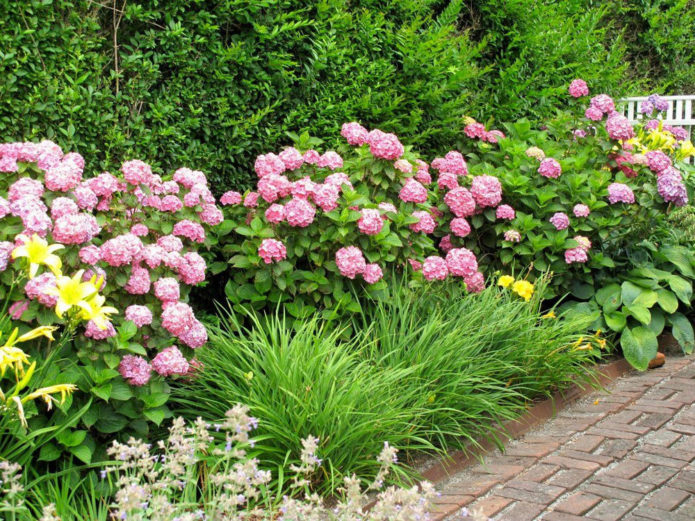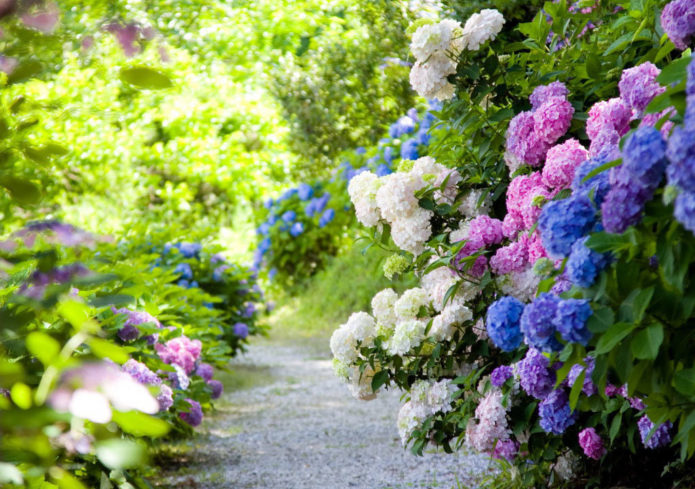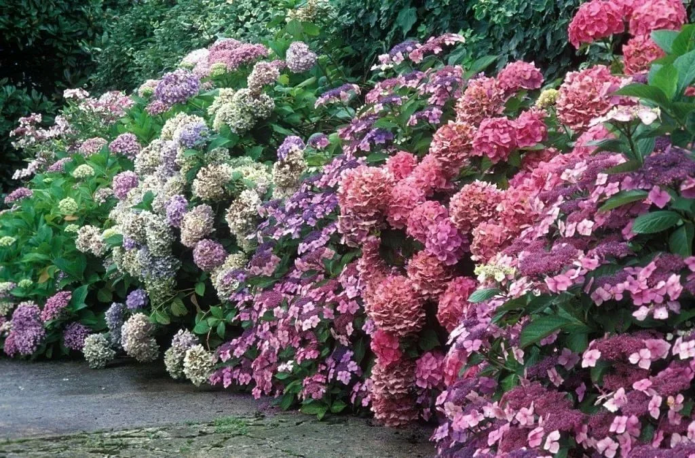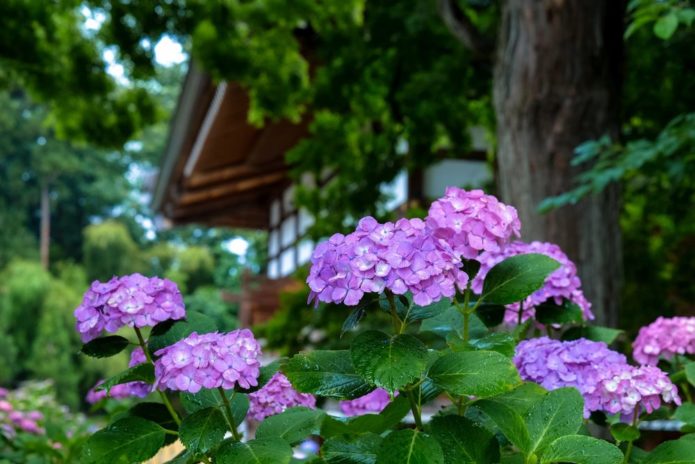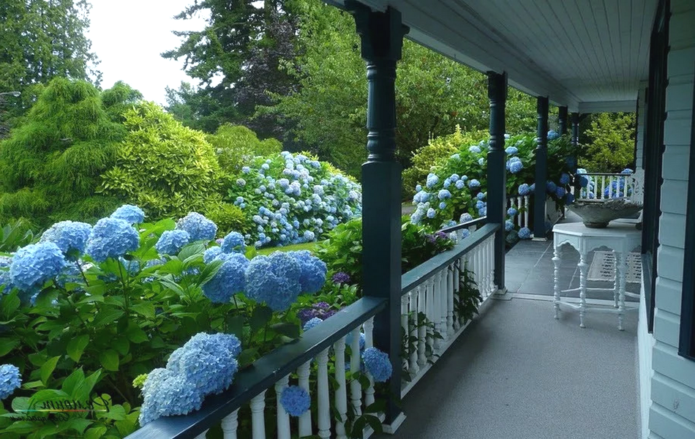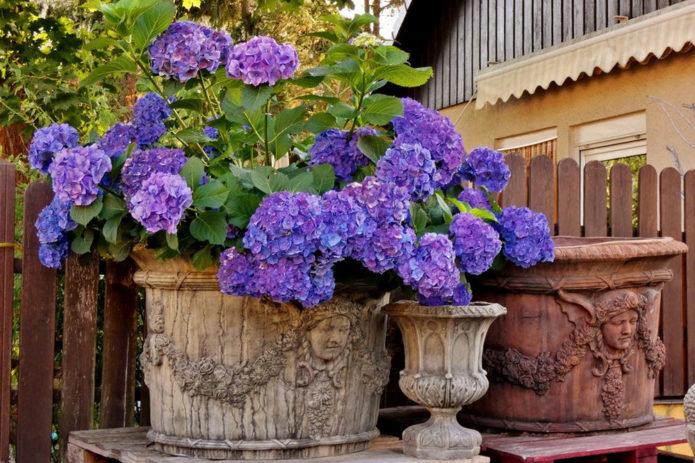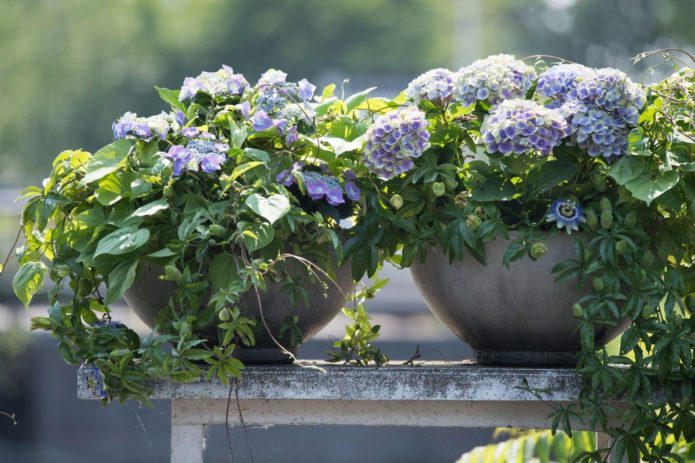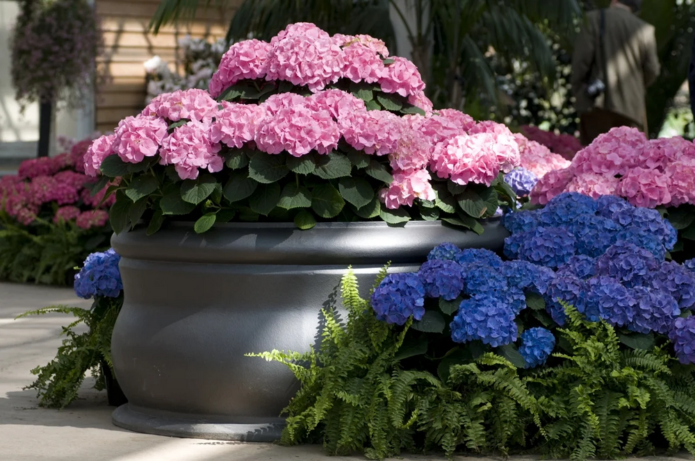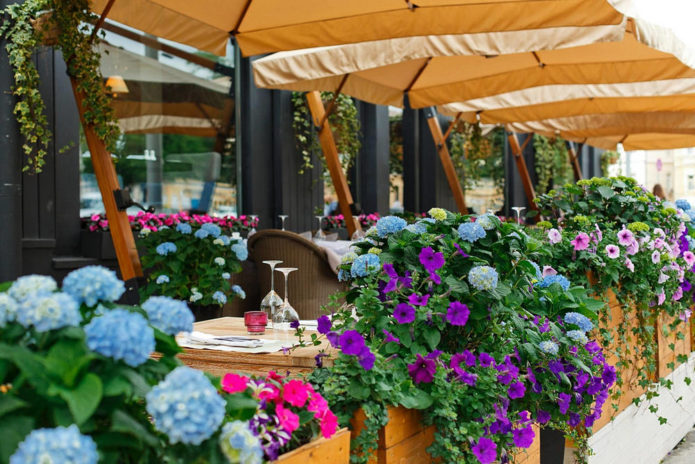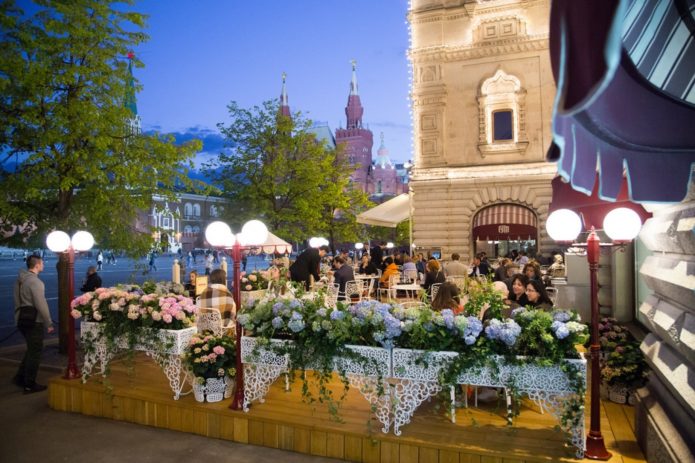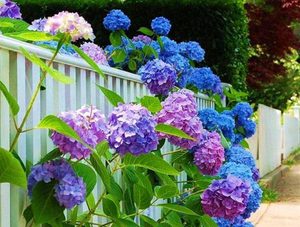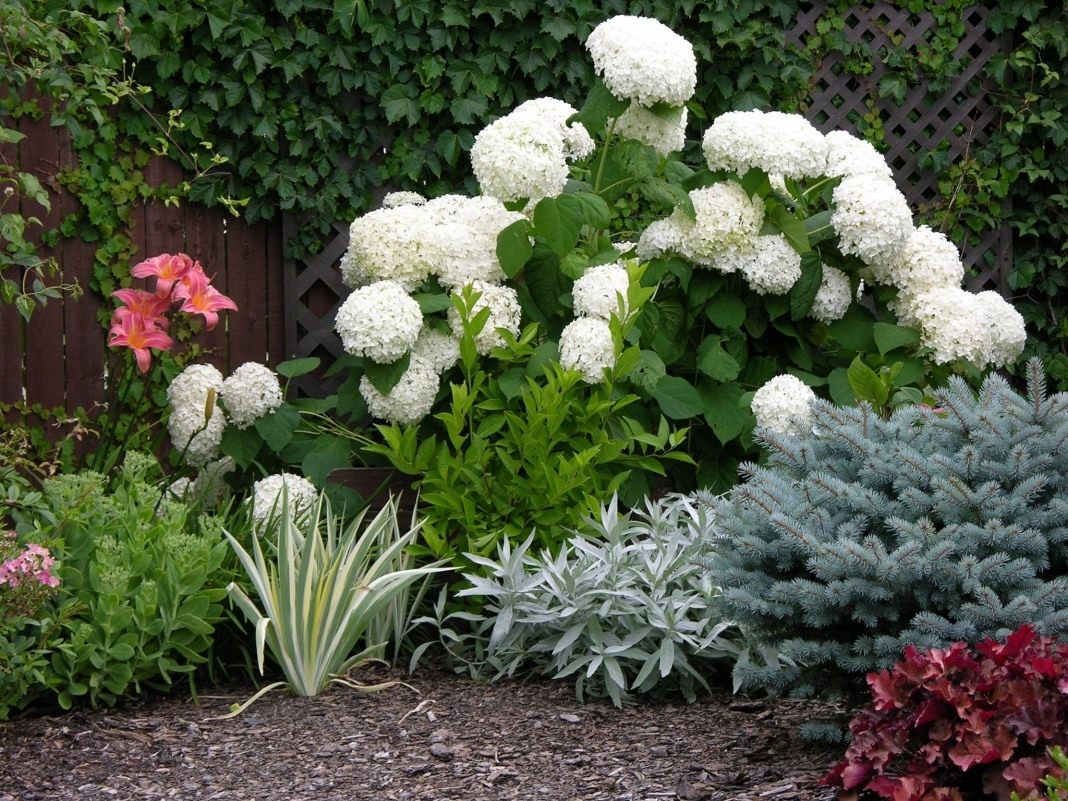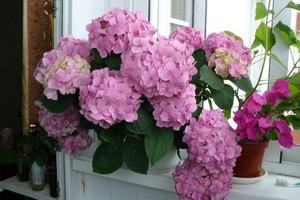What is the picture if you say "a vessel with water"? Oooh, this is where the fantasy will play out! An Indian woman in a bright sari, holding a large jug or a luxurious bouquet on her head, standing in a crystal vase. Or maybe an ancient amphora filled with rainwater, or an elegant sculptural composition "Girl with a jug" in St. Petersburg? There are many, many similar examples. But today we will talk about a luxuriously flowering hydrangea plant, the name of which is translated from Greek just like that (ὕδωρ - water, ἄγγος - vessel). There are a lot of ideas for using hydrangea in landscape design, we share the best of them!
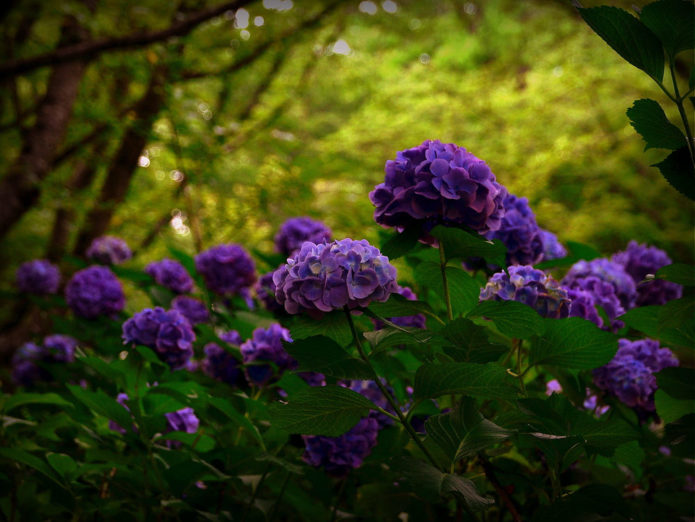
The oriental beauty is incredibly charming! No wonder this plant is so popular among landscape designers around the world. Scattered with small inflorescences that look like soft fluffy clouds, tall shrubs always refresh the garden with their exuberant and long flowering.
The advantages of hydrangea are countless:
- Abundant flowering begins in mid-summer and lasts until late autumn. An incredible palette of inflorescences, collected in umbrellas or panicles, fills the garden with bright colors in the interval between the faded spring and not yet blooming autumn flowers.
- The petals of delicate flowers, like miniature chameleons, change shades throughout the season. The creamy colors smoothly turn into pale pink, then acquire a heavenly azure, and later in the autumn, the bush is crowned with golden crowns.
- Hydrangea is resistant to high humidity and rainy weather. Its flowers are heavy from rain, but keep their shape and do not get wet. However, what persistent babies!
- The plant, in addition to its beauty, is also unpretentious. It tolerates moist soil well, likes both shaded and open sunny places, frost-resistant.
- The variety of fast-growing varieties makes it possible to fill the garden plot with volumes in a short time, which will add decorativeness and completeness to the garden.
- And, of course, one cannot fail to note the incredible variety of colors of hydrangeas, from pastel colors to bright flashes against the background of luscious emerald greenery.
The most popular group of hydrangeas, which is most often used in landscape gardening, is large-leaved bush. Large lush shrubs, reaching up to 3 meters in height, will not go unnoticed with all the desire.
The brightly blooming tapeworms are simply doomed to everyone's attention and admiring glances. Yes, hydrangea is still a coquette!
But our beauty has quite a friendly disposition and gets along well with other representatives of the flora.
Against the background of the strict beauty of evergreen conifers, hydrangea will show itself favorably in all its glory! Fluffy juniper, slender thuja and dwarf spruce with blue needles will perfectly serve as a background for a flowering shrub.
Hydrangea and boxwood with a bizarrely trimmed crown look very impressive.
Large-leaved lush hosts planted in front of a bush or tree-like hydrangea will cover the lower part of its stems, thereby complementing the garden composition.
And how beautiful the tandem of hydrangea and peony looks.They are just made for each other! The dark malachite leaves of the already faded peonies soared up to the inclined branches of a delicate hydrangea, strewn with gorgeous bunches of inflorescences. Delight! It remains only to put a bench and have a good rest in a pleasant company.
Speaking of rest. Sitting in a wicker chair or on a swing with cozy soft cushions next to the exuberantly blooming Weems Red panicle hydrangea, be prepared for some inconvenience. The intoxicatingly sweet honey aroma of this hydrangea variety will invariably attract the attention of gourmet insects. For a recreation area, it is better to choose varieties of hydrangea that have a faint smell.
For the design of arbors, arches, pergolas and other small architectural forms, you can use the climbing hydrangea petiolaris "Petiolaris" with beautiful inflorescences-umbrellas. An amazing plant, if supported, can crawl up to as much as 25 meters! Hydrangea is very effective as a hedge or as an outdoor decoration for the walls of the house.

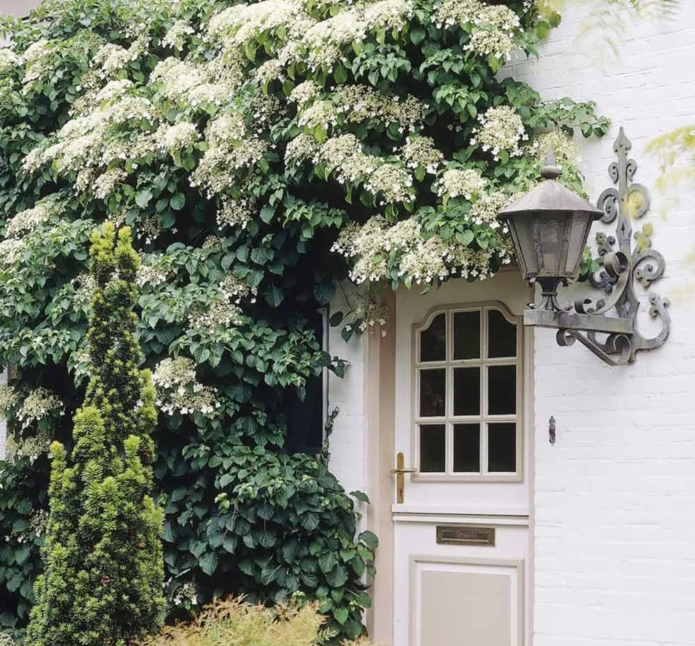
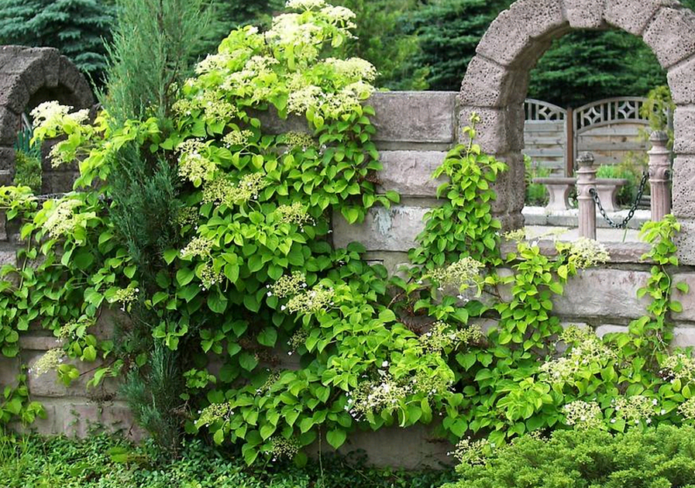

Dwarf "Kordifolia", not exceeding one and a half meters, looks good in mixborders and flower beds in the front garden. In general, any hydrangea will decorate the front area near the house: both undersized and on a trunk with a lush crown.
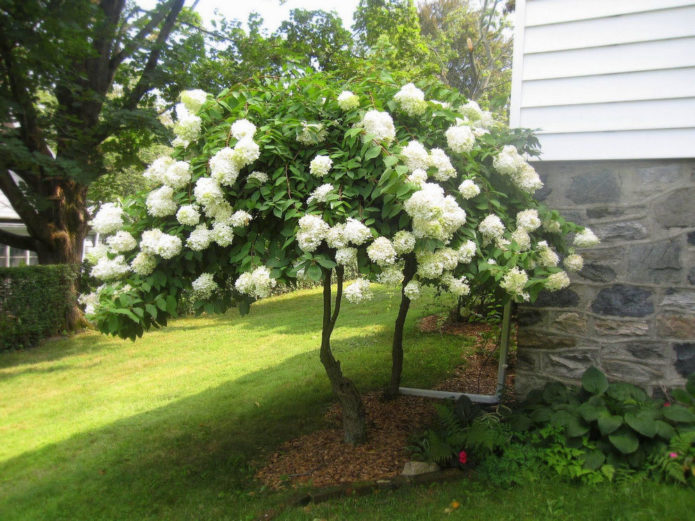
It was said just above that Hydrangea is a lover of wet soil, so it will not mind at all if it is placed near a natural or artificial reservoir.
The borders and beds, decorated with an exquisite beauty hydrangea, look elegant and fresh. It is very pleasant to stroll along the garden paths, where the romantically blooming bright shrubs with a delicate aroma are located.
Hydrangea prefers shaded areas, so it will be glad to be close to tall trees - owners of a spreading crown.
Flower containers with hydrangea look great both on the terrace or balcony of a private house, and on city streets, in a recreation area near a summer cafe and in large parks.
And finally, heed the advice: chewing hydrangea leaves or gnawing its seeds is highly discouraged, since all parts of this plant are poisonous, so do not experiment yourself and do not let pets do it!
